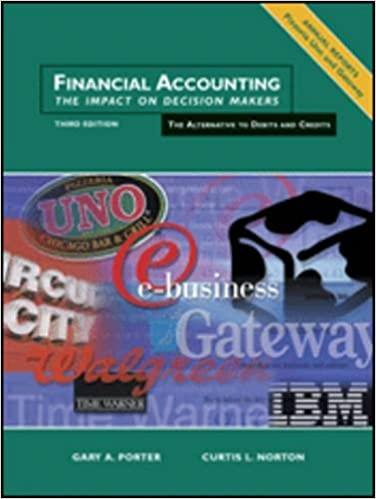Prepare an Income Statement, Balance Sheet, Statement of Stockholders Equity, Statement of Cash Flows for Seafood Cuisine Inc. as of December 31, 2020 for the
Prepare an Income Statement, Balance Sheet, Statement of Stockholders Equity, Statement of Cash Flows for Seafood Cuisine Inc. as of December 31, 2020 for the info below:
In January 2020, Mackenzie and Sophia Sidgman, co-owners of Seafood Cuisine got together to discuss the expansion of their restaurant from a single location in Anchorage, AK, to Juneau. This restaurant would be called Juneaus Seafood Kitchen. Although the Anchorage restaurant had been open for only two years, it had a loyal customer base from neighboring businesses and the University of Alaska Anchorage (UAA). Despite the success of the restaurant in Anchorage up to this point, Mackenzie and Sophia knew they would need to borrow money to finance the new restaurant. They also understood that they would be expected to present a set of current financial statements as part of any loan application. In addition, they anticipated that their future business prospects would be better if they formed a company that could function as a parent company for their current restaurant and any future restaurants that they might open. With this decision made, they began the long and onerous process of setting up their restaurant. As a result, in March 2020, they formed Seafood Cuisine, Inc. by contributing $11,000 in cash in exchange for all of the companys 1,100 shares of stock. Sophia convinced her father to loan the new venture $150,000 in cash, with principal payable at the rate of $15,000 per year over ten years and interest payable at a rate of 5.5% on the outstanding balance as of the beginning of the loans year. The loan agreement was signed on March 31, 2020, and provided that both principal and interest would be paid only once a year on March 31. During March, the girls searched for an appropriate location for the new restaurant. Mackenzie negotiated a lease agreement for approximately 2,000 square feet of retail space at a rate of $1,200 per month. The agreement ran for six years, with an option to renew for five more years. The landlord agreed to give the girls two months of free rent on the front end of the lease in order to help the new business survive the critical start-up period. In addition, Sophia arranged to buy a commercial refrigerator, range, and grill for $30,000 in cash, delivered and installed on March 31. This equipment was expected to last five years (per sellers assessment). Mackenzie and Sophia also purchased computer hardware with restaurant-specific software already installed, at a cost of $15,000 cash. The girls plan to depreciate this equipment over six years. Other cash purchases included: Food preparation equipment $1,800 Restaurant furniture and fixtures $2,700 This equipment was expected to have a useful life of three years. With a desire to have the new restaurant to be fully operational by April 1, Mackenzie and Sophia requested that their landlord allow their carpenter, electrician, painters, and plumbers to begin renovations to the leased location on March 30 and 31. The workers completed the necessary renovations and improvements at a cost of $68,000 in cash. Improvements and renovations would be depreciated over five years. The purchased kitchen equipment was delivered on March 31 and Juneaus Seafood Kitchen opened on April 1, 2020. First year of operations Although Mackenzie and Sophia had prepared their business tax return in April 2021 (for 2020 income taxes), they had not prepared a full set of financial statements using the accrual method of accounting. Nevertheless, they kept all the necessary information in a spreadsheet, and Sophia was able to compile these cash flows and relevant accrual information by each income statement account into a columnar form, as follows: Description 2020 (Cash Flows) REVENUES $182,000 Individual restaurant sales were cash transactions. However, the girls had developed relationships with local businesses. Sales to these businesses were on account. The billings totaled $30,000, and were paid by the businesses within 15 days of the following month. EXPENSES Food costs Once a week, Mackenzie sat down to write checks to pay bills. By year-end, only one week of food costs remained unpaid, totaling $9,000 $60,000 Supply costs These costs included miscellaneous items such as napkins and ice. The items were generally paid out of petty cash. $4,800 Utilities At the end of the year, one month of electricity, telephone, and water remained unpaid. $8,000 Employee wages These costs were kept fairly low. Mackenzie was an extraordinary baker and Sophia was an excellent chef. For the simpler work, they only hire college students. At the end of the year, one week of wages ($1,400) remained due. $44,000 Licenses The new business license fee was paid early morning on April 1, 2020. This payment allowed the restaurant to begin operations immediately. $900 Insurance A comprehensive insurance policy was purchased on April 1, 2020. The policy covered loss due to theft, fire, or storm damage. The policy also covered business-related risks such as lawsuits arising from customer injury while on the restaurant premises. This policy covers three years. $18,000 Income taxes The girls agreed to assume that income taxes would be paid on April 15, at a rate of 15%. Owner compensation The girls treated the amount they withdrew for personal use as dividends. $25,000 Depreciation Depreciation expense for all assets placed in service begins with the first full month of operation (e.g. nine months for those assets placed in service during 2020)
Step by Step Solution
There are 3 Steps involved in it
Step: 1

See step-by-step solutions with expert insights and AI powered tools for academic success
Step: 2

Step: 3

Ace Your Homework with AI
Get the answers you need in no time with our AI-driven, step-by-step assistance
Get Started


